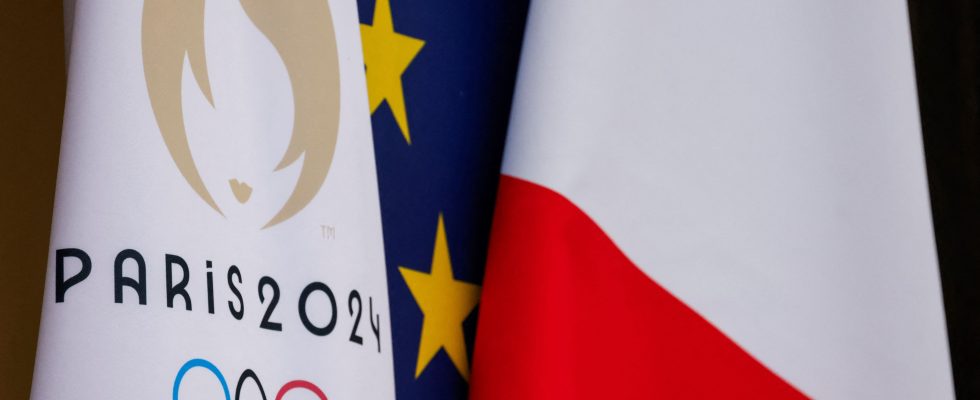Six and a half months before the Summer Olympics (July 26 – August 11), developments planned for the capital are beginning to take shape and emerge in Parisian public space. Anne Hidalgo, the mayor of Paris, repeats: “We are ready.” On infrastructure, the network of cycle paths, the reception of events on the Olympic sites, or even that of tourists, “I have never stopped saying it: we are ready”, underlines the city councilor, pointing out that there are “other subjects, such as public transport, on which there is still work”.
For Parisians, “of course there will be constraints with the installation of the Olympic sites, for some of them from March April”, adds the mayor. But “the Games in Paris will be an unforgettable celebration,” she predicts. Especially since certain developments are planned to be sustainable and will remind the memory of Parisians and the French of these 2024 Olympics.
The pedestrianized Place de la Concorde
For the Olympic Games, part of the Place de la Concorde will be requisitioned and pedestrianized to host the so-called urban sports events (BMX freestyle, breakdancing, skateboarding and three-person basketball), as well as the opening ceremony of the Paralympic Games (August 28). – September 8). This weekend, the mayor of Paris announced that half of Place de la Concorde, the largest in the city, will not be returned to motorists after the Olympics.
In a newspaper interview La Tribune Sunday, Anne Hidalgo specified that the place “will be offered to the promenade from the Tuileries to the obelisk”, at the end of the Games. “Traffic is more fluid by closing half of the square,” she believes, adding that the “place given to the car in this emblematic place will have been only a parenthesis in History”. “Place de la Concorde, Trocadéro and Iéna […]with the Champ de Mars, constitute 50 hectares of pedestrian and planted spaces for walking”, she indicates, and “60 kilometers of additional cycle paths” will be put in place “compared to what we would have done without the Games”.
The ring road limited to 50 km/h
Another key measure taken for the Olympics and which will remain anchored in the daily lives of Parisians: lowering the speed on the ring road. The town hall headed by Anne Hidalgo announced at the end of November its desire to limit the speed on the ring road to 50 km/h after the Olympic Games. However, the former Minister of Transport, Clément Beaune, affirmed that the State “will not validate” this measure. The Minister of Energy Transition, Agnès Pannier-Runacher, denounced an “anti-social” measure likely to generate more traffic jams and therefore CO2 emissions.
The ring road, one of the main urban axes in Europe, is used every day by 1.2 million vehicles, the majority from Ile-de-France, and 80% of which travel with their driver as the sole occupant. “It is a measure of common good which has a collective interest”, insisted the elected environmentalist David Belliard to Agence France Presse, ten years to the day after the speed reduction of 80 km/ h at 70 km/h on the 35 kilometer ring which surrounds the capital.
In addition, Paris plans to dedicate one lane of its ring road to carpooling, by perpetuating the lane reserved for participants, i.e. the left lane, after the 2024 Olympic Games. Equipment for detecting infractions, similar to radars, is being installed and should become permanent.
An Olympic aquatic center and pools
Since Paris was declared host city for 2024, little major infrastructure has been built, as much pre-existing. However, an Olympic aquatic center (CAO), which did not exist in the capital and thus deprived it of the organization of major international competitions, was built. It is located in Saint-Denis, just opposite the Stade de France. Moreover, a footbridge suspended above the ring road connects them. It is one of two pieces of equipment built specifically for the Olympic Games. From 2025, it will benefit residents and users of the metropolitan area and in particular of Seine-Saint-Denis, a department under-equipped with swimming pools where one in two young schoolchildren does not know how to swim when they enter sixth form.
However, the Olympic Aquatics Center will only host artistic swimming, diving and water polo matches. The swimming race, or so-called “online”, will take place at the Paris la Défense Arena in Nanterre. Stainless steel panels will be assembled to form two temporary 50-meter Olympic pools. At the end of the Olympic Games, these pools will head to Sevran and Bagnolet to serve as municipal swimming pools.
